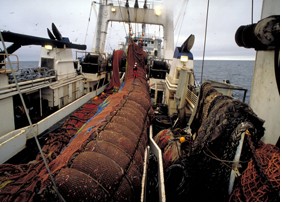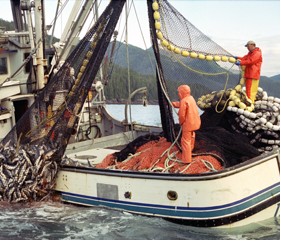| In today’s global marketplace sustainable fisheries are often identified through independent certification processes or reputable seafood guides. But at the coastal community level, where entire businesses and communities are dependent on the long-term health of their fisheries, it is measured in a more complex manner.
To capture that complexity, the SeaAlliance has developed the following “Practical Principles for Sustainable Fisheries” based on our experience with fisheries in Alaska. In Alaska, the fishing industry and fisheries-dependent communities have a deep sense of responsibility for the oceans and a strong sense of their own historical connection to the sea. The best sustainable fishery programs have been primarily designed by these stakeholders, working collaboratively with fishery scientists and managers. There is a great diversity in the fisheries of Alaska, the nation, and the world. Regardless of the specific details for any particular fishery, there are basic characteristics to sustainable fisheries. The SeaAlliance relied on these common characteristics to develop the following principles: |
|
SeaAlliance Practical Principles for Sustainable Fisheries
| 1. Science-based management is the guide and conservation comes first. Sustainable fisheries management sets conservative harvest limits, incorporates measures to reduce bycatch, and takes into account ecosystem factors such as forage fish and habitat.
2. Leave enough fish for the future. A sustainable fishery is managed on scientifically based annual catch limits, including specific measures to prevent overfishing, leaving enough fish to constantly replenish the natural population. Sustainable fisheries are generally managed around hard caps that limit directed fishing and incidental catch to a scientifically set, predetermined and sustainable level of harvest. Once the fleet hits the cap, it stops fishing. 3. Cooperation, rather than competition on the fishing grounds. By sharing information, fishermen can avoid areas that are environmentally sensitive or where high rates of bycatch may occur. Sustainable fisheries are often characterized by collaborative efforts to advance our understanding of the marine environment, fish behavior and fishery impacts. Such knowledge may lead to development of gear modifications that help reduce bycatch or negative impacts to habitat or other components of the marine ecosystem. 4. Take into account the impact of all ocean users. Long-term fisheries sustainability requires that all harvested fish are accounted for and the impact of all user groups – not just commercial fisheries – be monitored and managed to insure the long term health of fish stocks. 5. Work to understand the complex ecosystem relationships where fisheries occur, and promote an ecosystem-based approach to management. Achieving the goal of employing an ecosystem-based approach to management is dependent on having a solid scientific understanding of the complex relationships in marine ecosystems. Sustainable fisheries are dependent on this information to guide efforts to protect other ecosystem components such as forage species or sensitive habitats. |
6. Sustainable fisheries are based on the economic, social and cultural needs of fishery participants, the affected coastal communities and other stakeholders. Sustainable fisheries support economically viable industry and sustainable communities. The men and women who work in sustainable fisheries, and live in the coastal communities that are supported by those fisheries, have been shown to be the most reliable stewards of the resource itself – when given the proper management tools. Sustainable fisheries promote their involvement in decisions affecting their lives, and takes advantage of their unique hands-on expertise.
7. Successful management of sustainable fisheries depends on robust monitoring and enforcement programs. Accurate, transparent, and dependable monitoring programs are necessary to ensure that harvest limits are not exceeded. Enforcement needs to be consistent and applied evenly. Fishery participants have to know that the rules are enforced fairly. Such programs can include observers, electronic monitoring, Vessel Monitoring Systems, or other independently verifiable mechanisms to monitor target catch and bycatch. 8. Sustainable fisheries comply with all relevant laws and international agreements. The elimination of illegal and unreported fishing throughout the world is a major priority of sustainable fisheries stakeholders and regional and national governments.  These principles have been the core of the main United States fisheries law, the Magnuson Stevens Act. It was through the decades of dedication by Senator Ted Stevens, carrying forward the legacy of the work he and Senator Magnuson started, that made Alaska’s fisheries a model for the world. The Marine Conservation Alliance dedicates these principles in his memory. These principles have been the core of the main United States fisheries law, the Magnuson Stevens Act. It was through the decades of dedication by Senator Ted Stevens, carrying forward the legacy of the work he and Senator Magnuson started, that made Alaska’s fisheries a model for the world. The Marine Conservation Alliance dedicates these principles in his memory.
|


